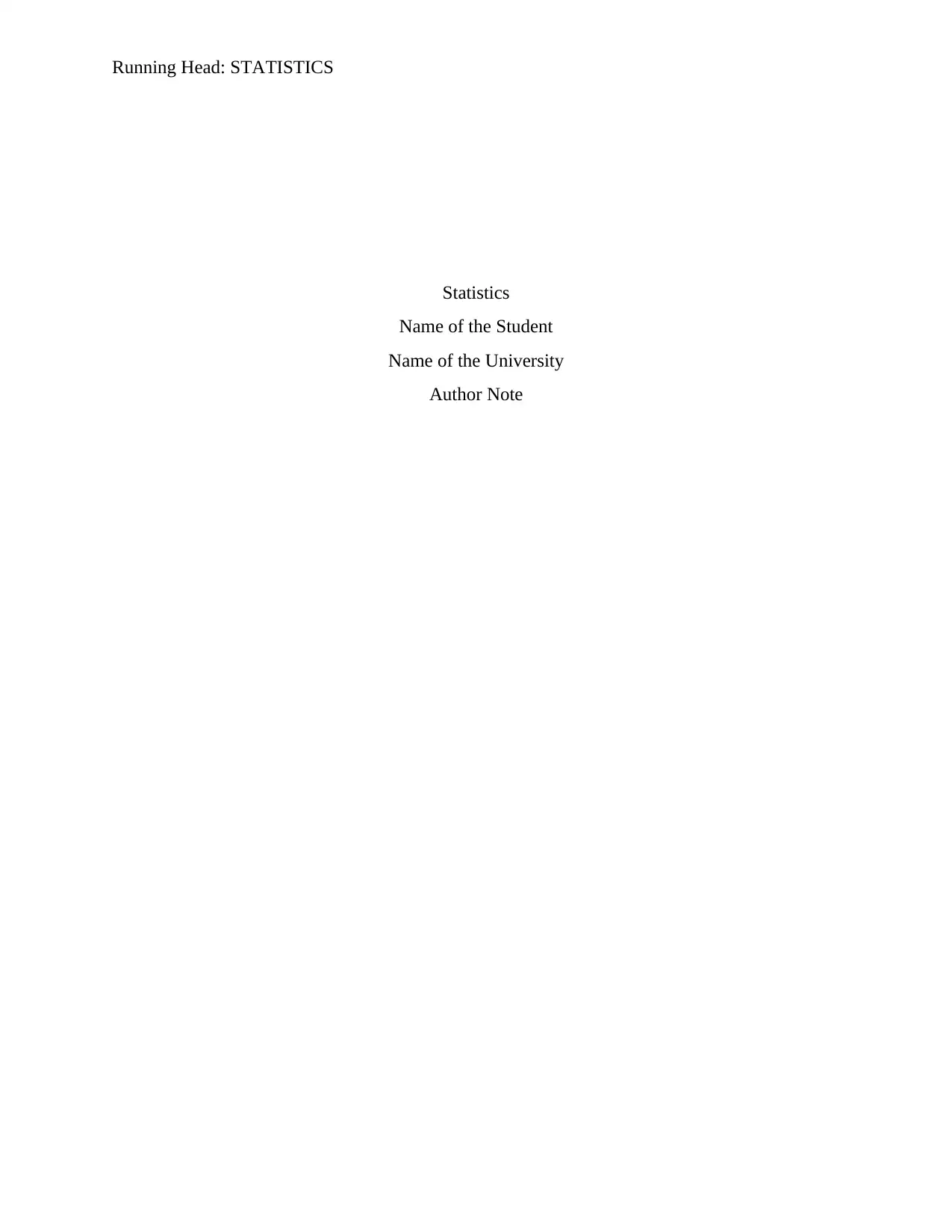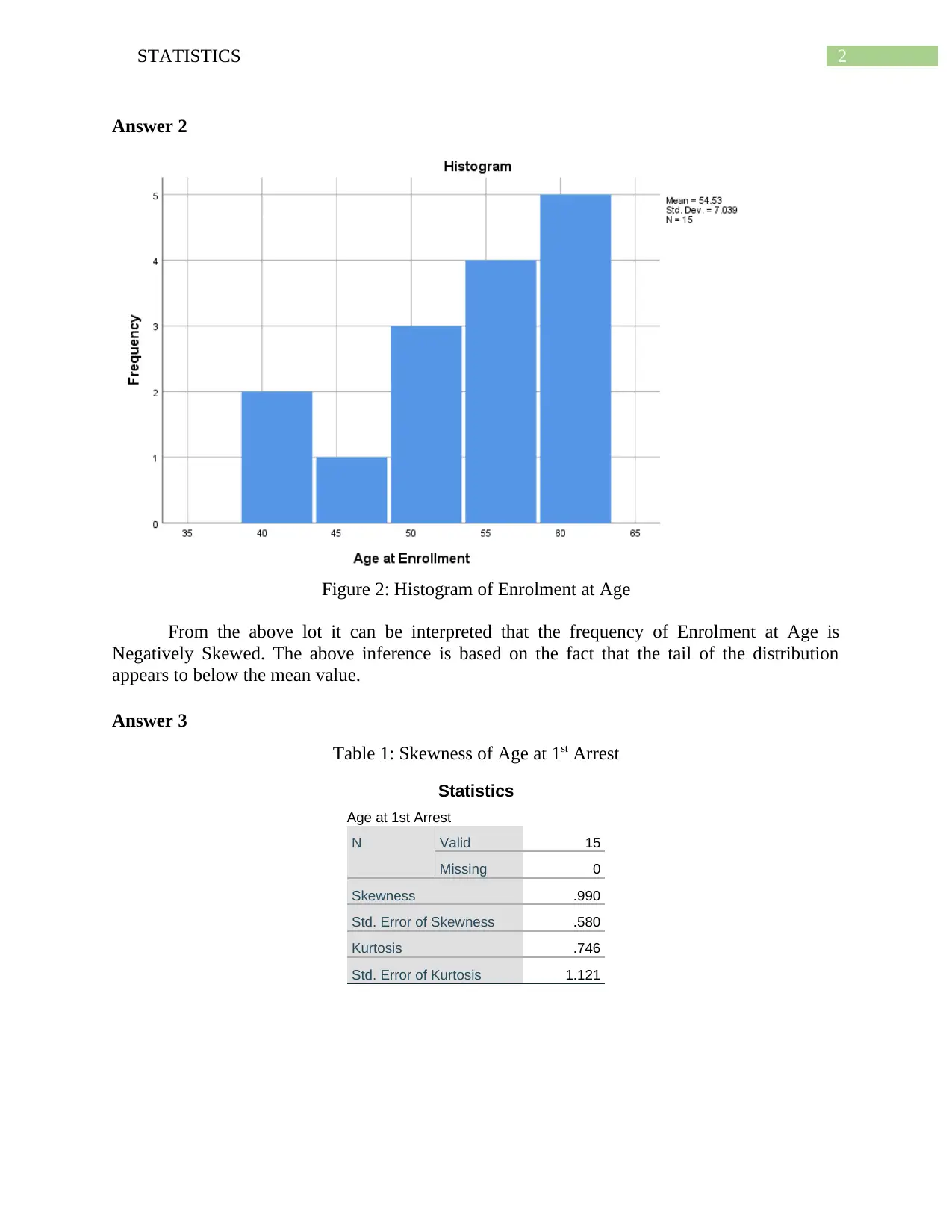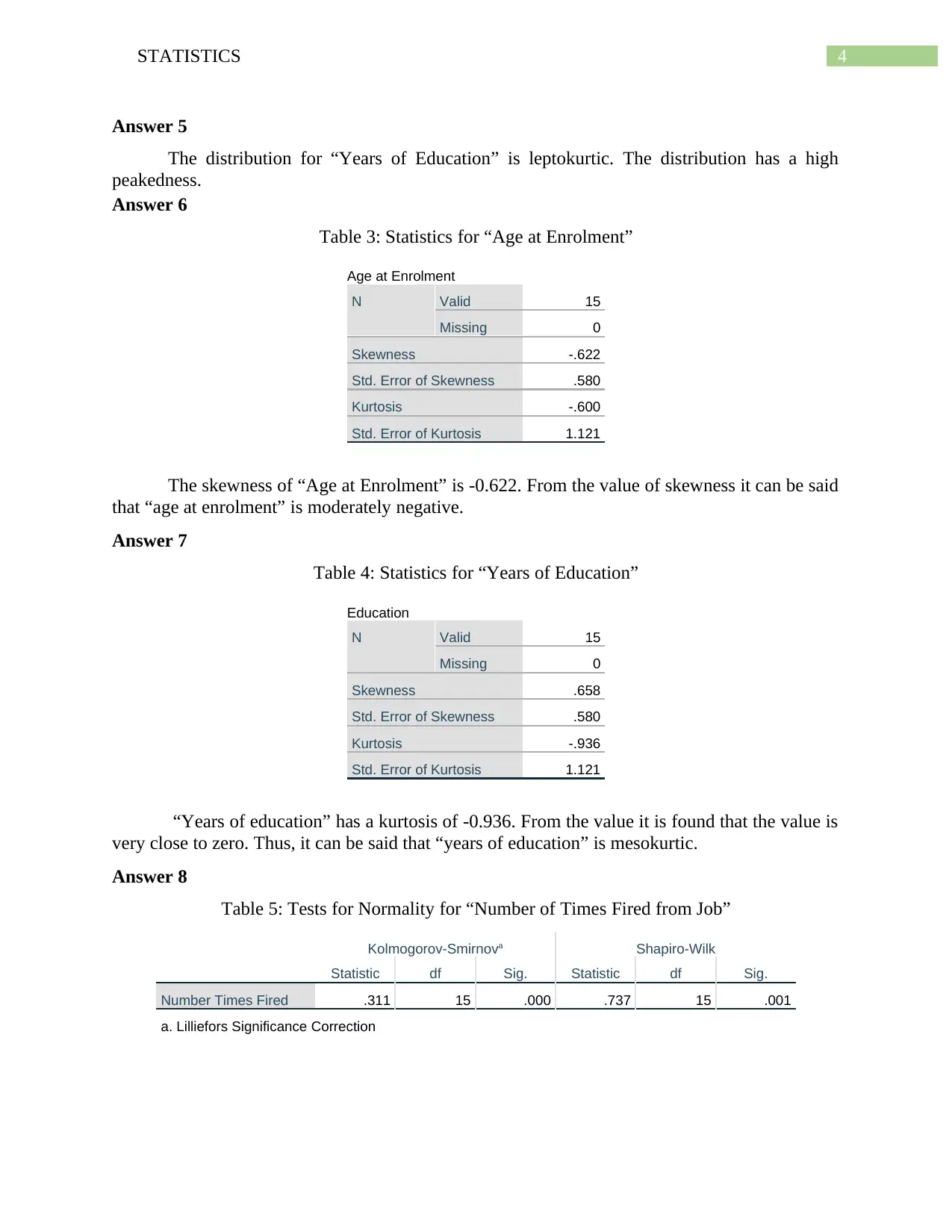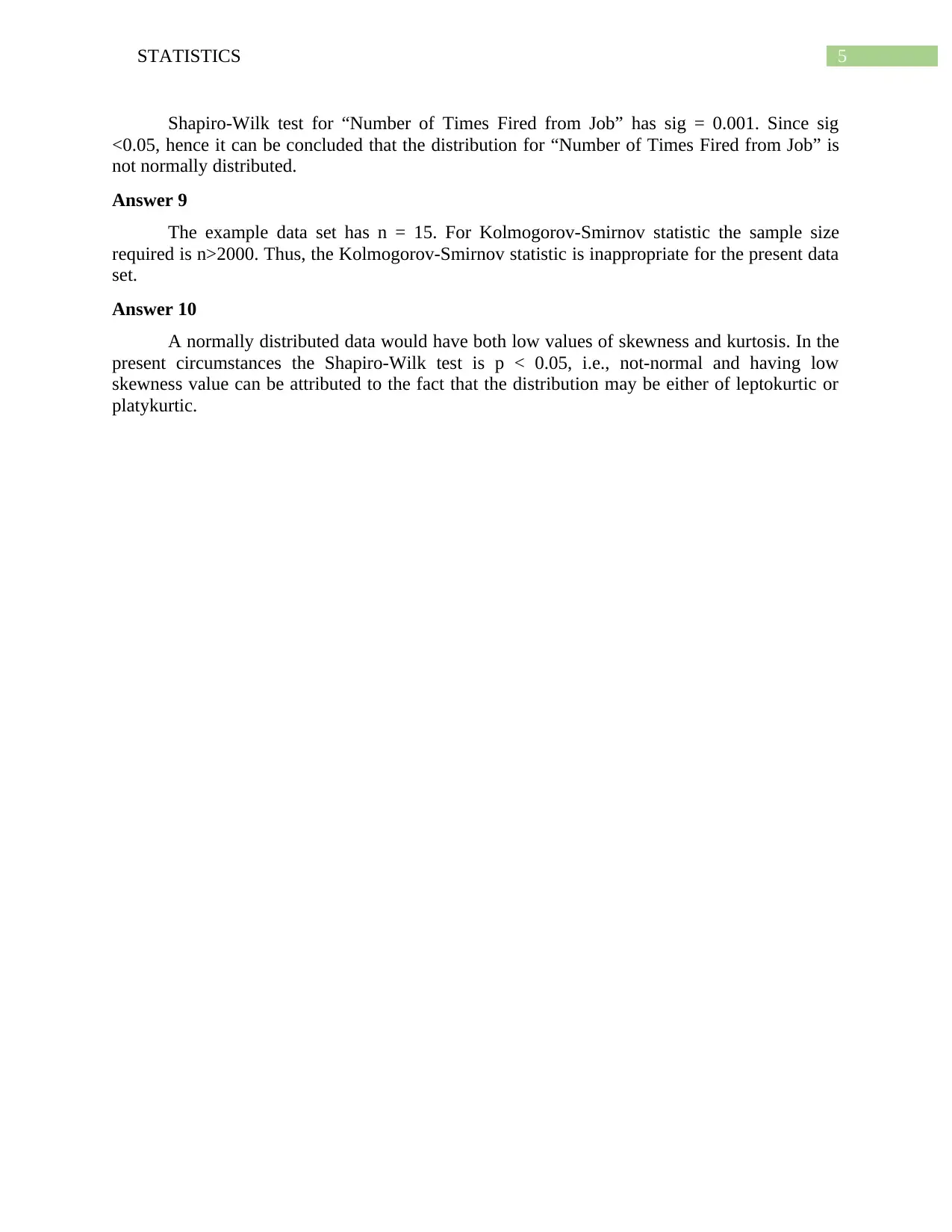Exploring Data: Skewness, Kurtosis, Normality Tests, and Distributions
VerifiedAdded on 2023/06/09
|6
|571
|123
Homework Assignment
AI Summary
This statistics assignment delves into analyzing data distributions, skewness, kurtosis, and normality tests using a sample dataset. The analysis includes frequency distribution plots, histograms, and statistical tests like Shapiro-Wilk. The assignment interprets skewness values for 'Age at 1st Arrest' and 'Age at Enrolment,' kurtosis for 'Years of Education,' and determines whether 'Number of Times Fired from Job' follows a normal distribution. It also addresses the appropriateness of the Kolmogorov-Smirnov test for small sample sizes and discusses the relationship between skewness, kurtosis, and normality, highlighting how distributions can be leptokurtic or platykurtic despite low skewness values. This document is available on Desklib, a platform offering AI-based study tools and a wide range of solved assignments for students.
1 out of 6












![[object Object]](/_next/static/media/star-bottom.7253800d.svg)